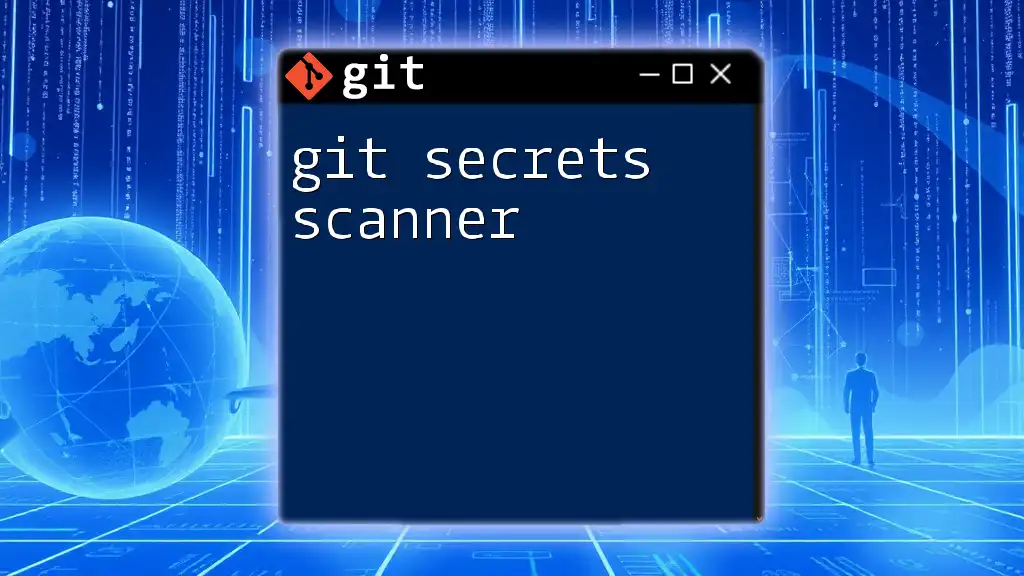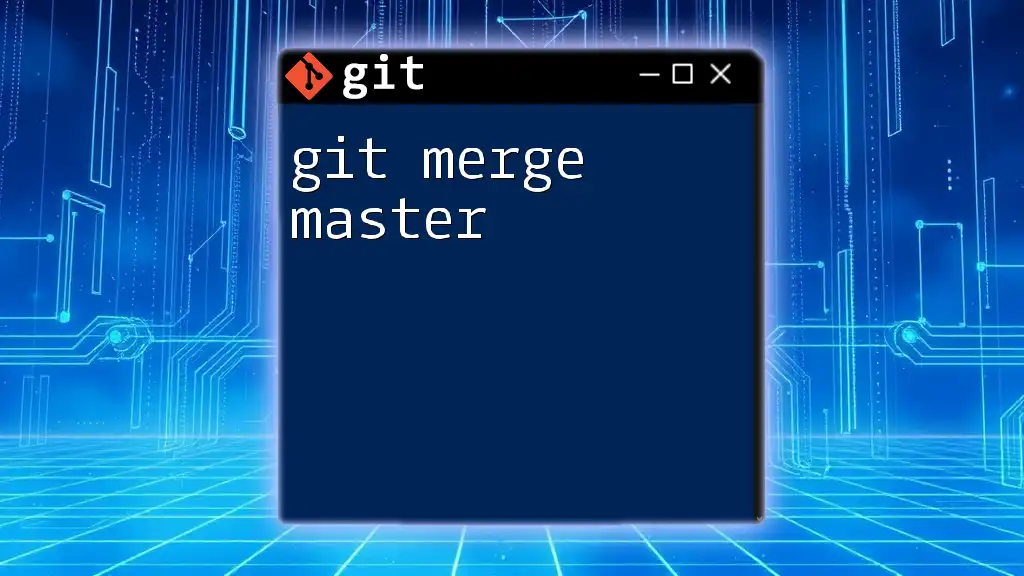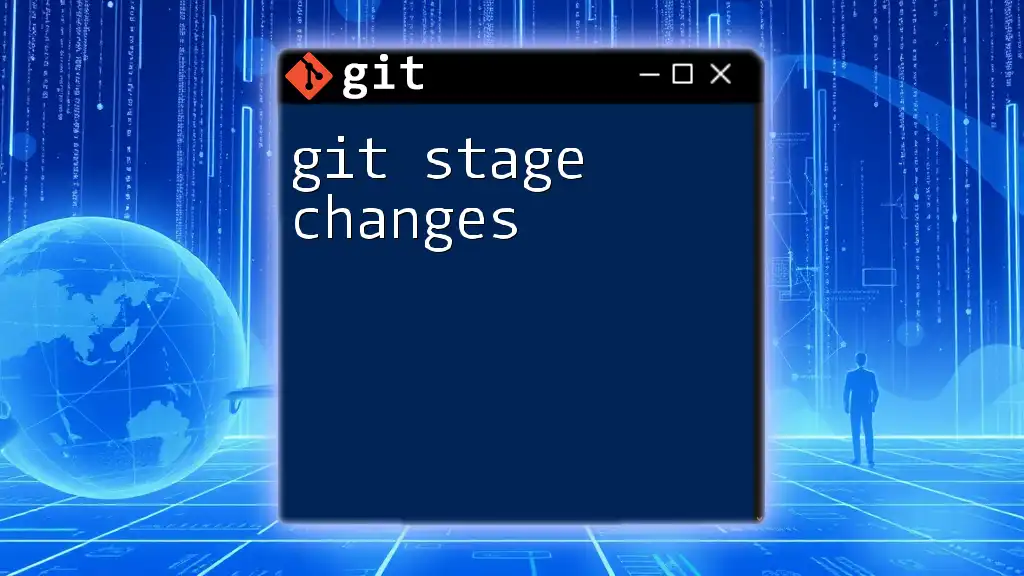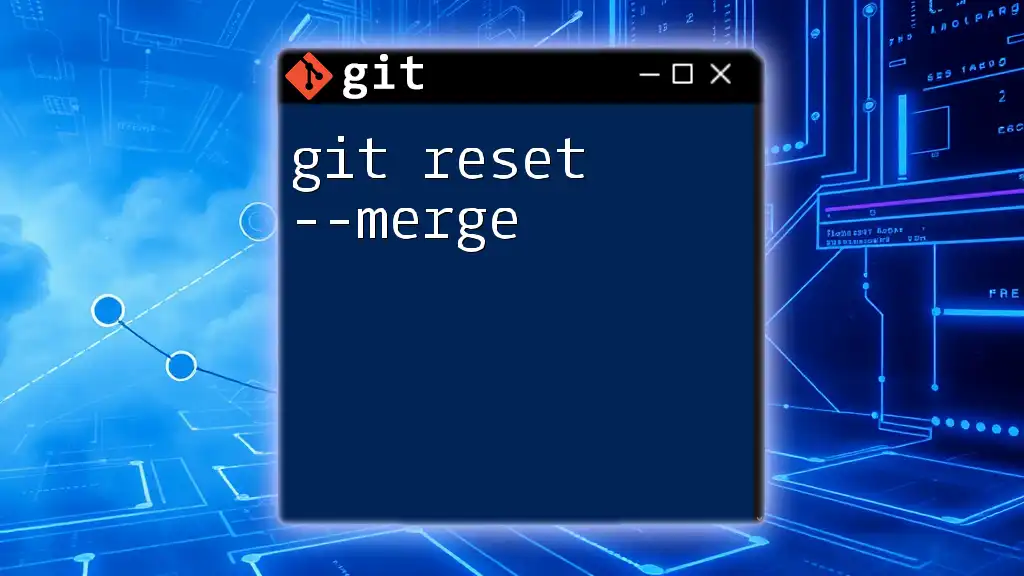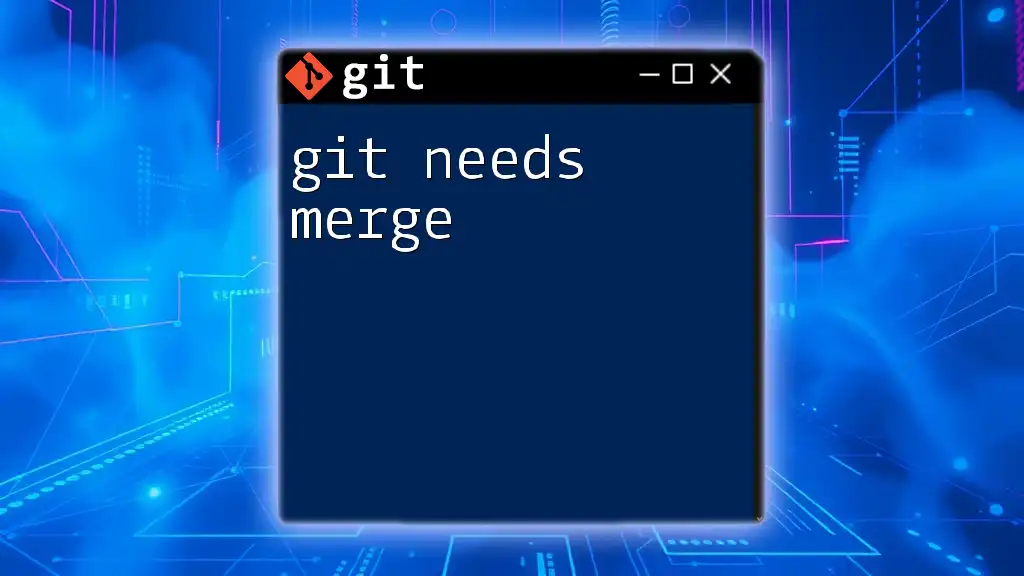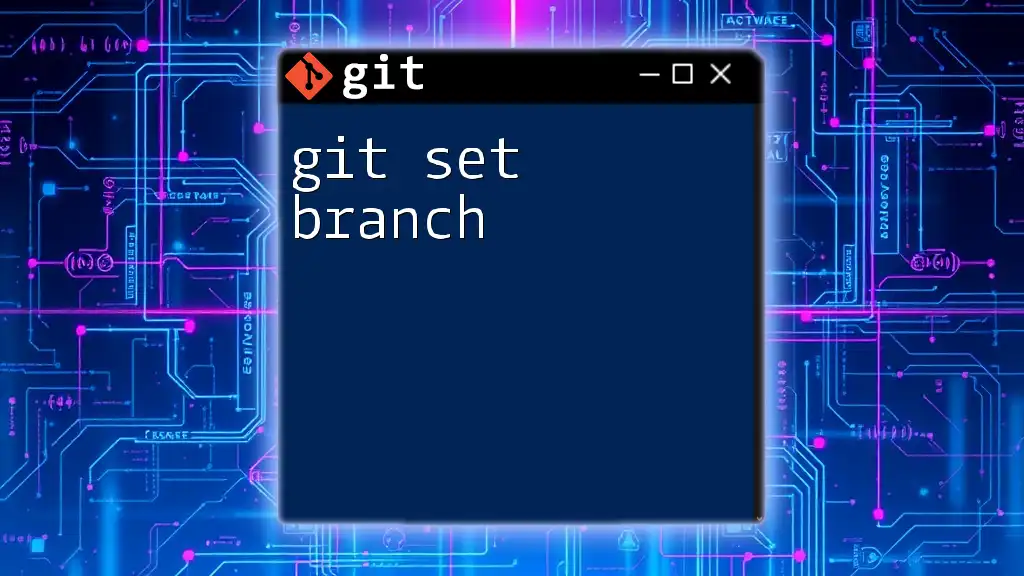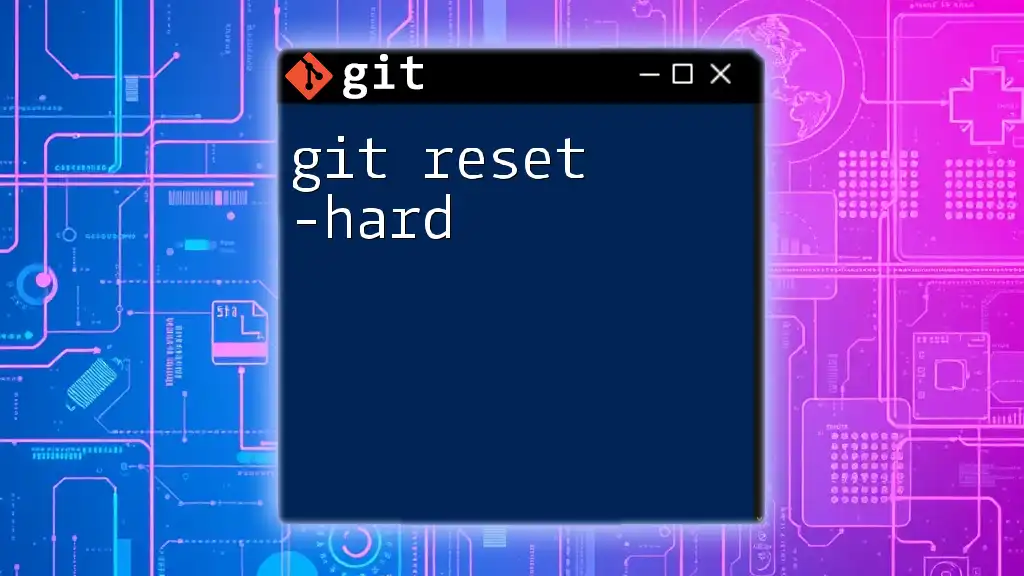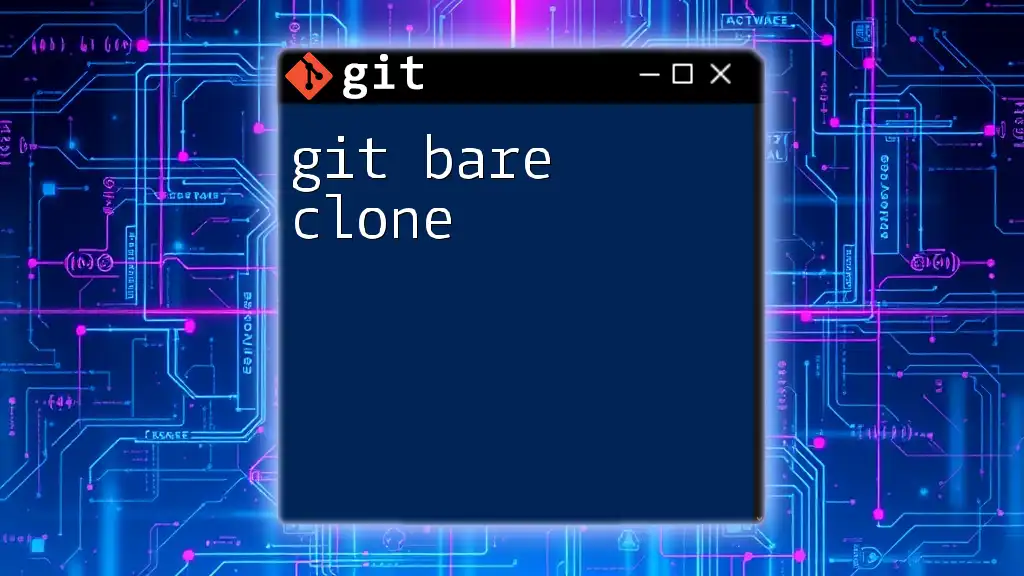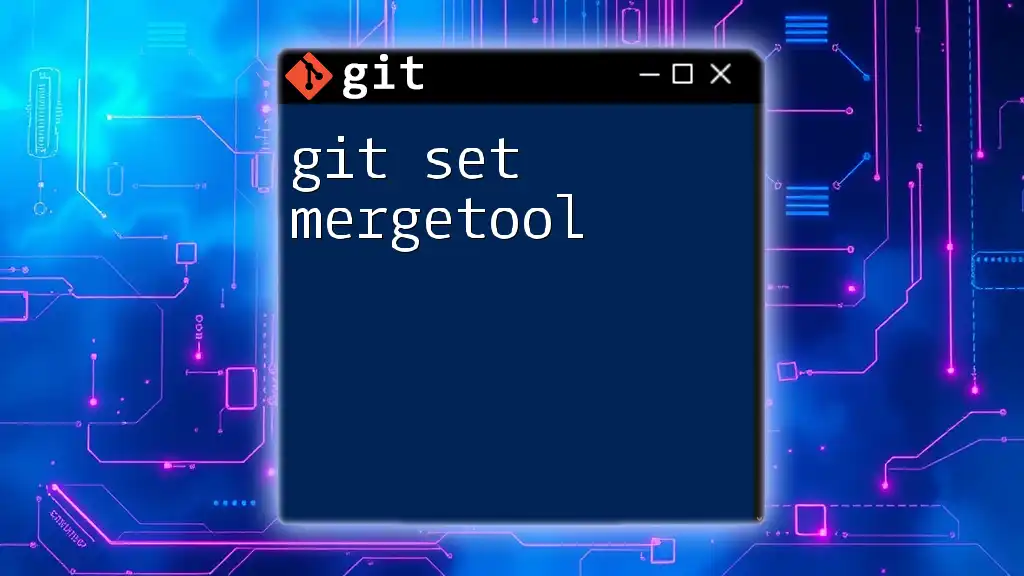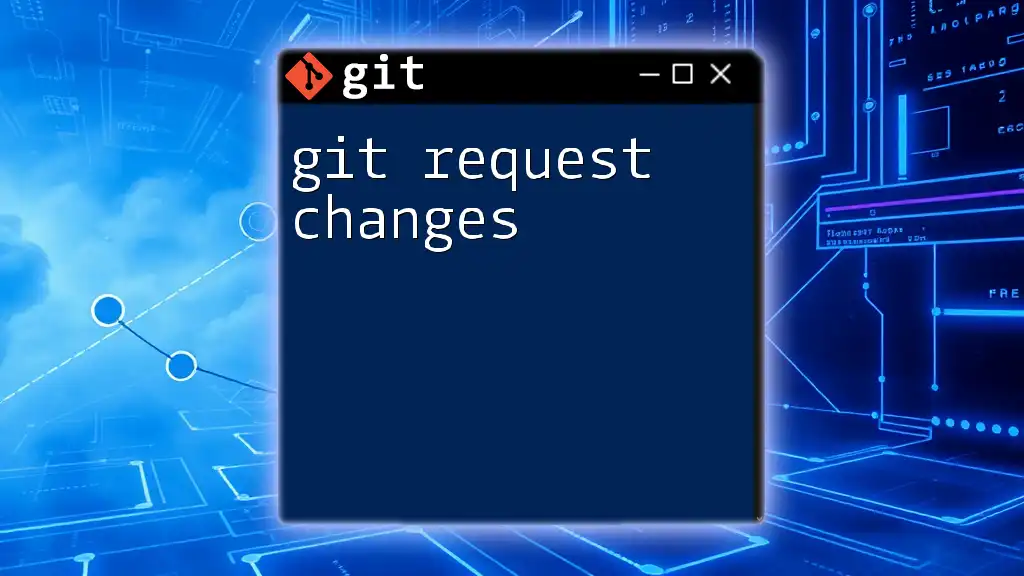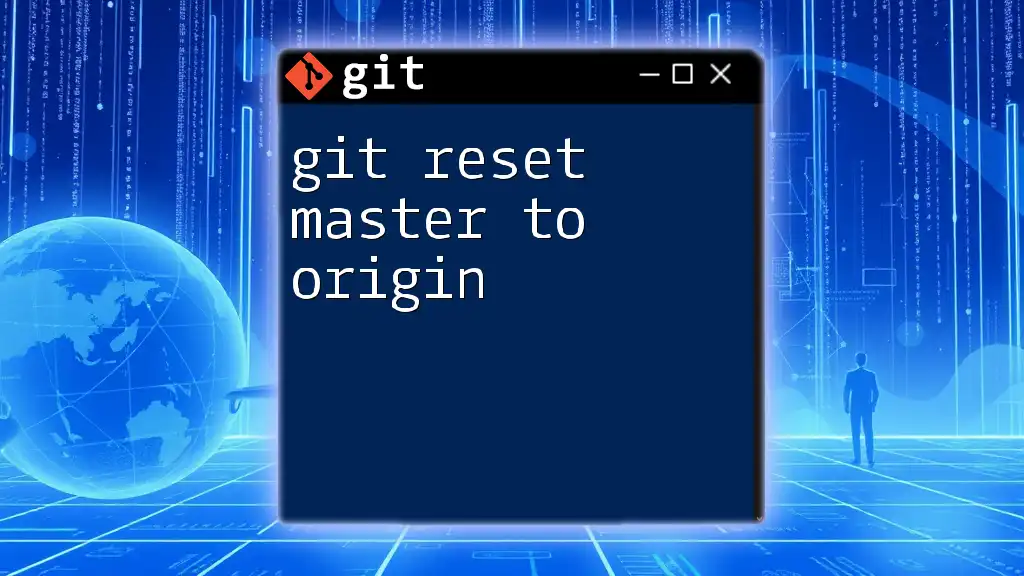A Git secrets scanner helps prevent sensitive information, such as API keys and passwords, from being inadvertently committed to a Git repository by scanning for common patterns before the code is pushed.
Here's a simple command to run a Git secrets scanner:
git secrets --scan
What is Git Secrets?
Git Secrets is a powerful tool designed to help developers ensure that sensitive information, such as API keys, passwords, and private keys, does not find its way into their Git repositories. By using Git Secrets, you can protect your codebase from potential data breaches and maintain the integrity of your application.
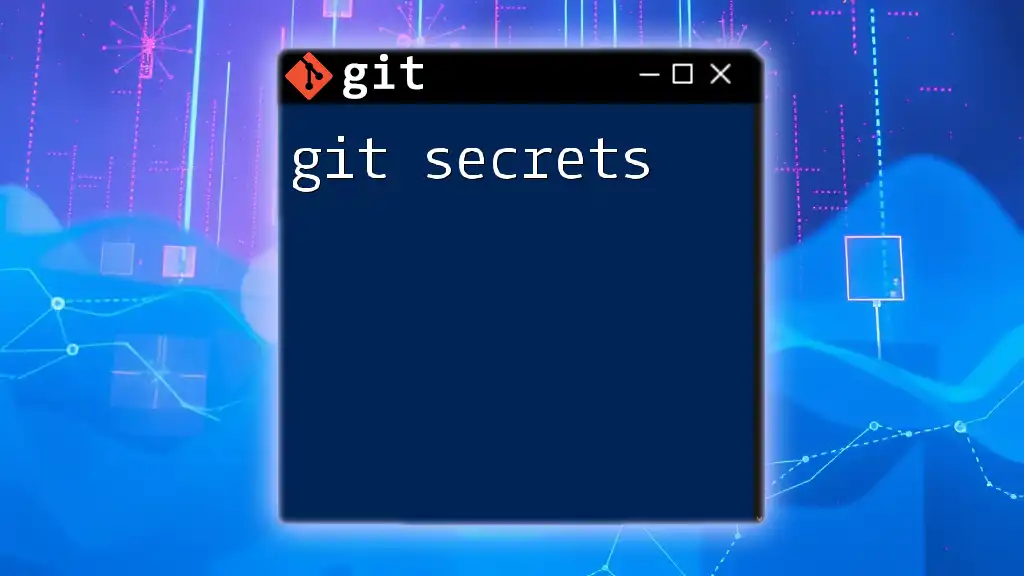
Understanding the Risks of Storing Secrets
Common Types of Sensitive Information
Developers often handle various types of sensitive data that need safeguarding. These can include:
- API keys: Credentials that allow access to external services.
- Passwords: User login credentials that must be securely stored.
- Private keys: Cryptographic keys used for establishing secure connections.
- Database credentials: Information required to connect to and manage databases.
Consequences of Exposure
The ramifications of storing sensitive information unprotected can be severe. These may include:
- Data breaches: Unauthorized access can lead to loss of sensitive user data.
- Financial loss: Organizations may incur significant costs related to rectifying breaches, including legal fees and penalties.
- Reputation damage: A company may lose customer trust, which can be difficult to rebuild after a security incident.
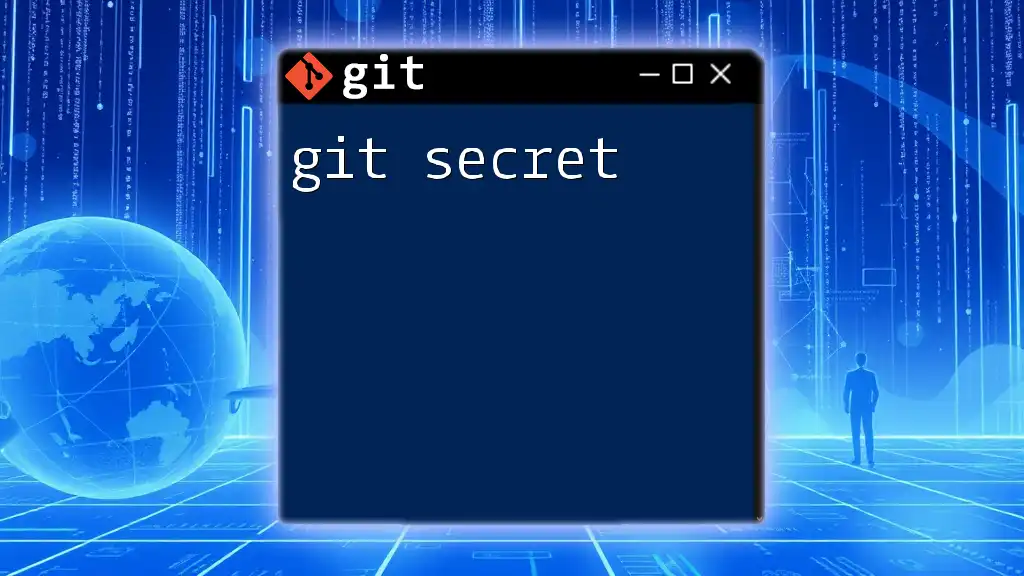
Setting Up Git Secrets
Installation
To get started with Git Secrets, you'll first need to install it on your system. The installation process varies depending on your operating system.
- macOS: You can easily install Git Secrets using Homebrew. Just run the following command in your terminal:
brew install git-secrets
- Linux: For Linux users, Git Secrets can typically be installed via your package manager. For instance, on Debian-based systems, you can execute:
sudo apt-get install git-secrets
- Windows: If you’re using Windows, you can leverage the Windows Subsystem for Linux (WSL) or Git Bash to run the same commands as in Linux.
Configuration
After installation, you will need to perform some initial configuration. Begin by creating a `.gitconfig` entry for Git Secrets to enable it globally.
git secrets --register-commit
git secrets --register-merge
These commands integrate Git Secrets into your Git workflow, automatically scanning for sensitive information upon committing and merging changes.
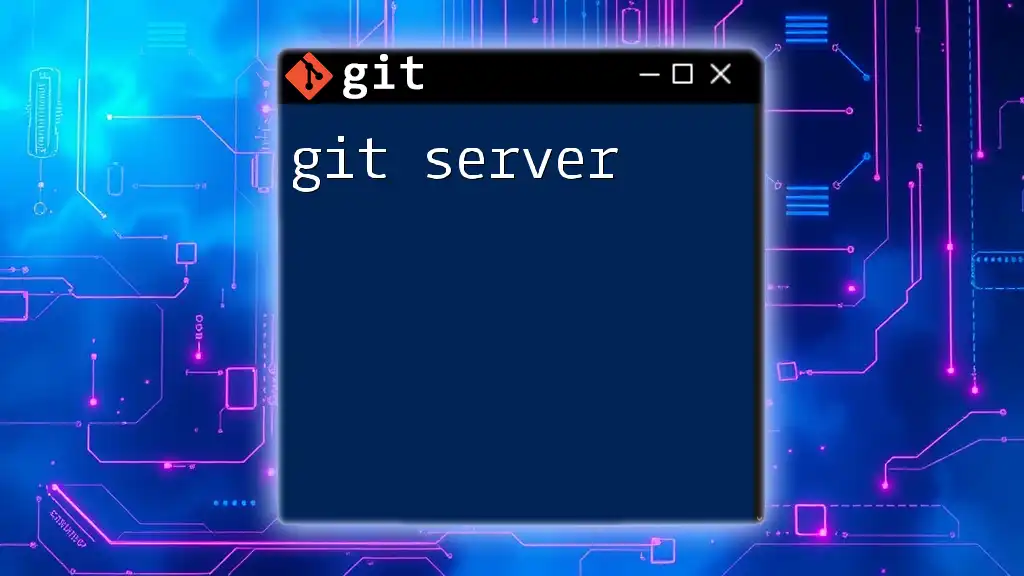
How to Use Git Secrets
Basic Commands and Usage
Utilizing Git Secrets is straightforward, and a few basic commands will cover most of your needs.
Scanning for Secrets
To scan your codebase for any secrets, simply run the following command from the root of your repository:
git secrets --scan
This command will check your files against predefined patterns and alert you if it detects potentially sensitive information.
Adding Patterns
For customized scanning, you can add your own patterns to detect specific types of sensitive information. You can create a regex pattern as shown below:
git secrets --add 'MY_API_KEY=[A-Za-z0-9]*'
This example searches for any occurrences of environment variables matching the pattern `MY_API_KEY=` followed by alphanumeric characters.
Pre-commit Hook Setup
A pre-commit hook is a script that runs before a commit is finalized. Setting up a pre-commit hook with Git Secrets ensures that not a single harmful commit can sneak into your repository.
To configure this in your repository, create a file named `pre-commit` within the `.git/hooks/` directory and add the following content:
#!/bin/bash
git secrets --scan
Ensure that the hook is executable by running the following command:
chmod +x .git/hooks/pre-commit
This configuration will trigger a secret scan every time you attempt to commit, providing an extra layer of protection.
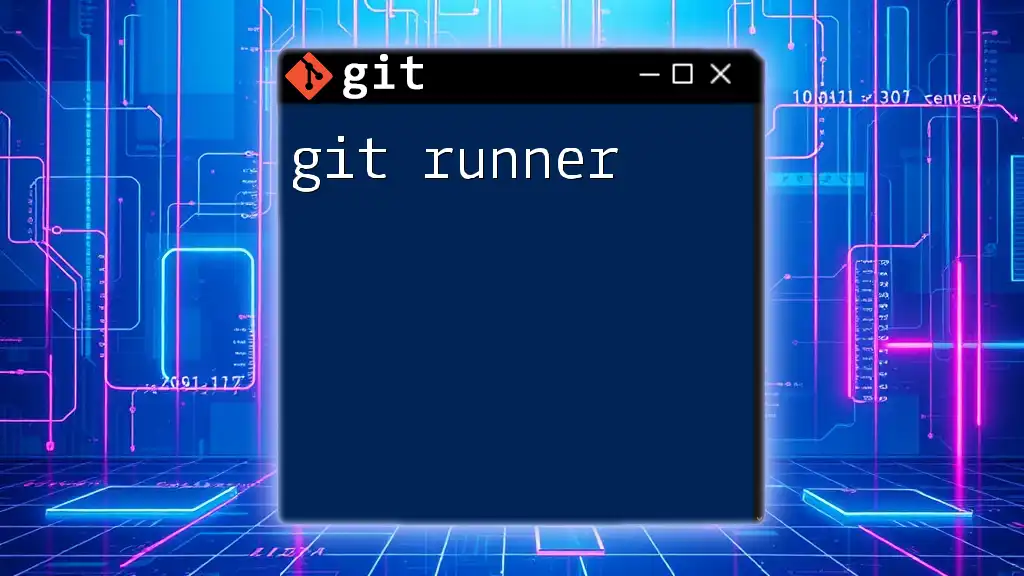
Advanced Configuration
Customizing Git Secrets Behavior
Git Secrets allows for customization of its behavior through various configuration options. Some of these options include:
- Adding more patterns to your config file to catch other types of sensitive information.
- Excluding certain files or directories that you do not wish to scan.
To exclude a directory, you might modify the `.gitconfig` file as follows:
[gitsecrets]
skip=path/to/exclude
Integrating with CI/CD Tools
In addition to protecting your local development environment, it’s crucial to integrate Git Secrets into your Continuous Integration/Continuous Deployment (CI/CD) pipelines. Doing so ensures that no secrets are leaked when changes are deployed.
For example, in a GitHub Actions workflow, you can add a job to scan for secrets before any deployment step:
jobs:
scan-secrets:
runs-on: ubuntu-latest
steps:
- name: Checkout Code
uses: actions/checkout@v2
- name: Scan for Secrets
run: git secrets --scan
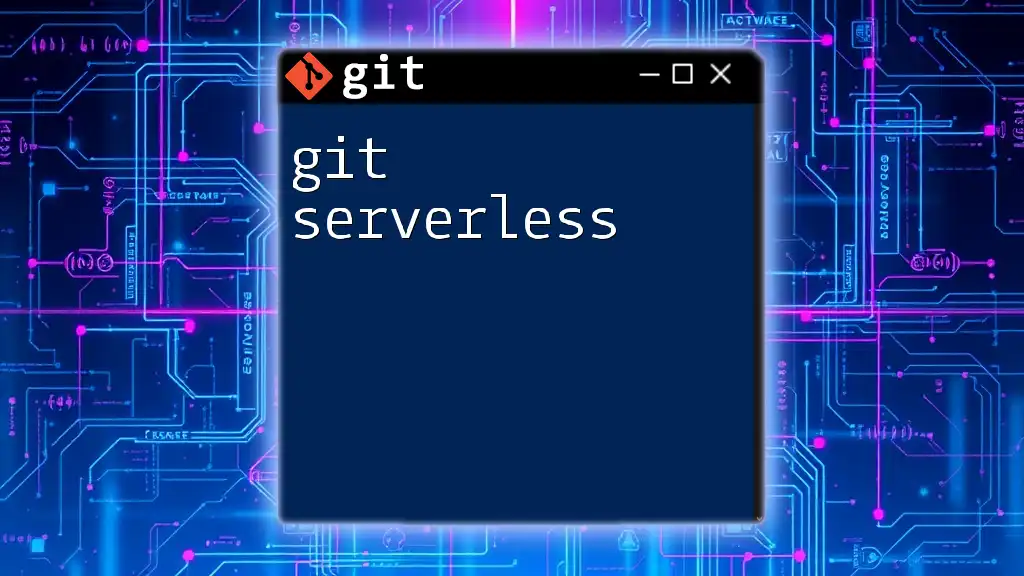
Case Studies
Real-World Examples of Git Secrets in Action
Case Study 1: A startup incorporated Git Secrets into their development process and was able to avoid a critical incident when a developer’s API key for a third-party service was inadvertently included in a commit. The pre-commit hook caught it, allowing them to modify the commit before it was pushed.
Case Study 2: A company that neglected to use a secrets scanner suffered a data breach due to exposed database credentials. The company had to incur costly measures to rectify the breach and faced significant reputational damage. The incident emphasized the need for regular scans.
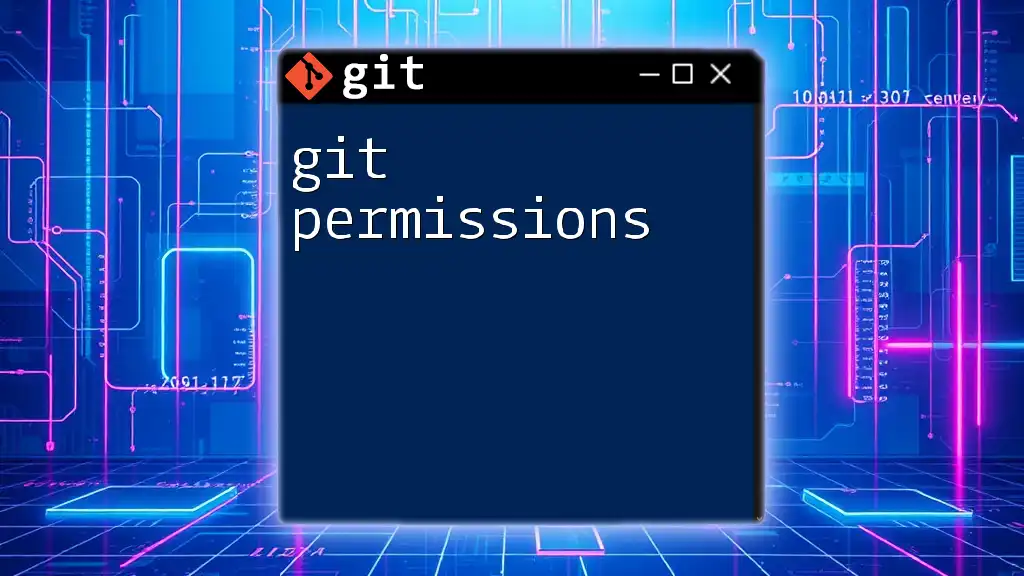
Best Practices for Secret Management
Avoiding Hardcoded Secrets
To maintain the security of sensitive information, avoid hardcoding secrets directly in your codebase. Instead, leverage techniques such as:
- Environment variables: Store your secrets in environment variables and access them accordingly. This keeps your secrets separate and out of your code.
- Secret management tools: Consider using dedicated tools like AWS Secrets Manager or HashiCorp Vault.
Regularly Audit Your Repositories
Even with tools like Git Secrets, it’s essential to conduct periodic audits of your repositories for any exposed sensitive information. Regular audits ensure you can proactively identify issues before they escalate.
By employing additional scripts or third-party tools in conjunction with Git Secrets, you can automate this process. Tools like TruffleHog can help in scanning previous commits for leaks.
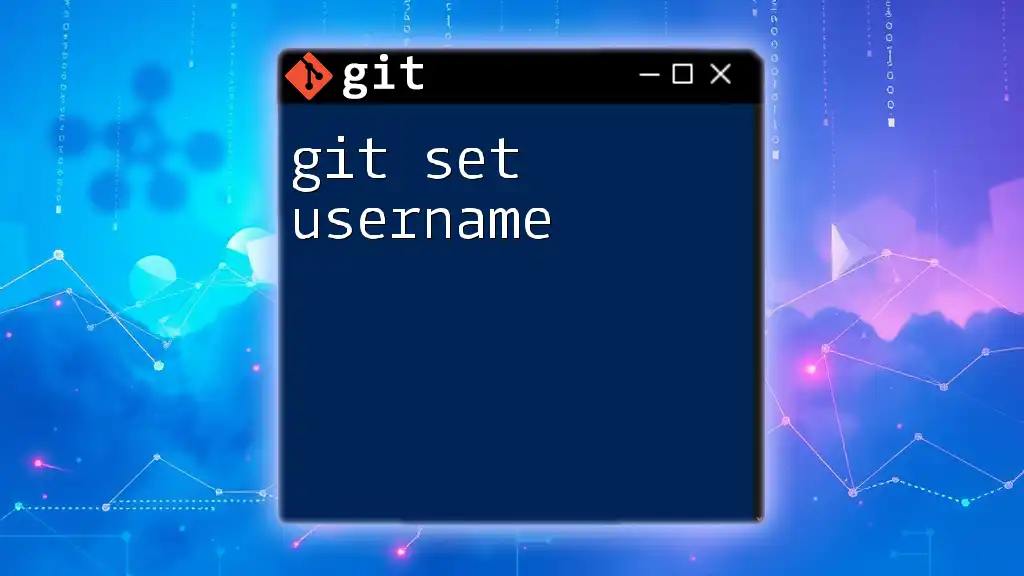
Conclusion
In conclusion, employing a Git Secrets scanner is critical for safeguarding sensitive information within your software development workflow. By integrating Git Secrets, you can effectively prevent the inadvertent exposure of secrets and mitigate risks associated with data breaches.
Take action today by implementing Git Secrets and join the ranks of developers committed to maintaining the security and integrity of their codebases.
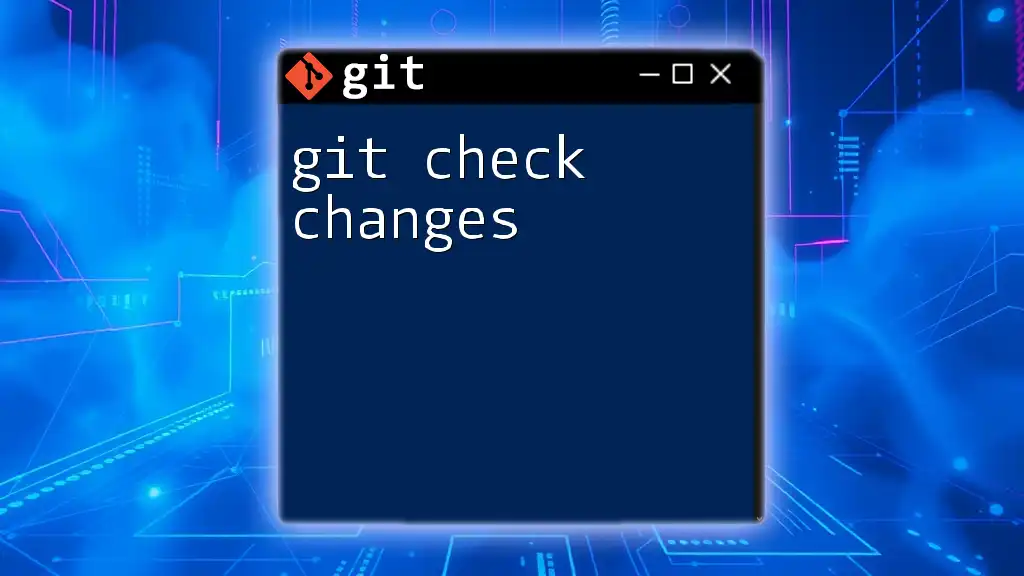
Additional Resources
For further reading and exploration, consider the following resources:
- Official Git Secrets GitHub repository for installation instructions and more advanced configurations.
- Comprehensive documentation for related tools and practices in secret management.
- Join developer communities on forums or social media for support and shared experiences on utilizing Git Secrets effectively.

